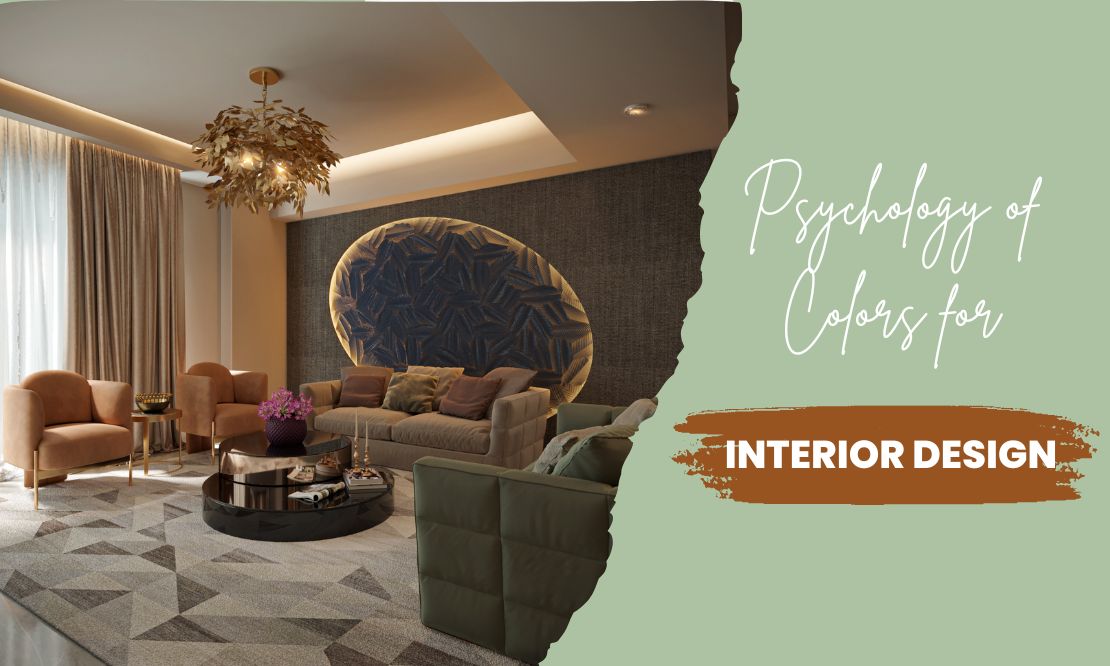Colours are the first things that we notice in our surroundings. Depending on what shades and intensity of colours are present, we feel happy, joyful, energised, calm, tense, confused, and so on. Colours determine the mood of a space and these moods influence us directly. The impact of colours on emotions is a well-established fact. This has been studied under the psychology of colours and its results are available for whoever wants to understand and benefit from them. Since colours are a fundamental element of interior designing, it is important to understand the colour psychology in interiors in depth before doing up a space.
As top interior designers in Delhi, our practice relies strictly on all academic, as well as practical knowledge about the psychology of colours in order to create holistic and harmonious spaces for our clients.
How Does Colour Psychology Affect Interior Design?
Colour psychology in interior design concerns itself with the kind of mood or ambience a colour or shade creates in a space. Colours and moods in interior design go hand in hand. Hence, designers depend on their knowledge of colour theory for interiors while planning interior colour schemes. Colour theory in interior design is a discipline that can greatly help any person doing up their space, as it offers insights into each colour and its moods and emotions.
In fact, colours are a result of how our eyes or brain perceive various wavelengths of light. That’s why colour and lighting in interior design need to be planned in conjunction with each other for better results.
On the colour spectrum, the shorter wavelengths comprise cooler tones from blue to purple, while the longer wavelengths are considered warm tones which constitute the reds family. This forms part of colour basics in interior design. However, the impact of colours on human mind and psyche is a deeply complex subject to understand.
So whenever designers want calming and serene interiors, they go for colours from the blues family, and when they want to inject energy and boldness into spaces, they select shades from the reds family.
Colours and interior design are inter-connected, as each hue whether bright or muted, has an influence on the psyche of the people who live there and even on those who visit the space. As a result, colour schemes for interiors are decided upon much consideration of the client’s desires and lifestyle and after an in-depth consultation with him or her. How you use colours in your interiors is an indication of your sensibilities and expertise. Also mixing and matching colours effectively is an art that needs to be carefully honed to achieve balanced interiors.
Let’s understand what the three primary and the secondary colours indicate:
1. Red
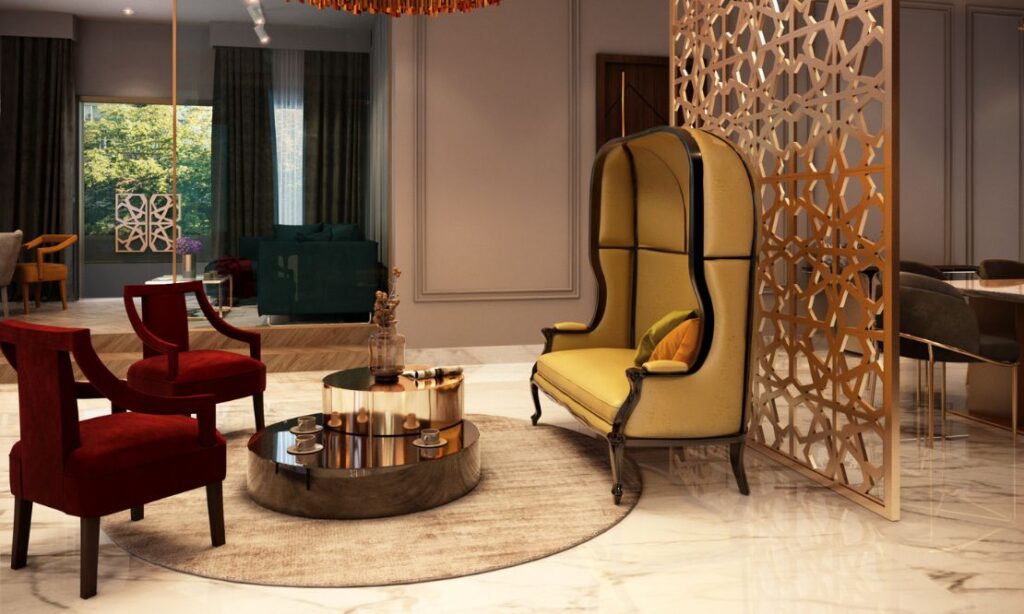
Synonymous with boldness, power and energy, red creates a warm and invigorating space. However, it is important to use the right shade of red for it to be pleasant, and also choose an appropriate dose, or it could overpower the room, especially in small spaces.
2. Yellow
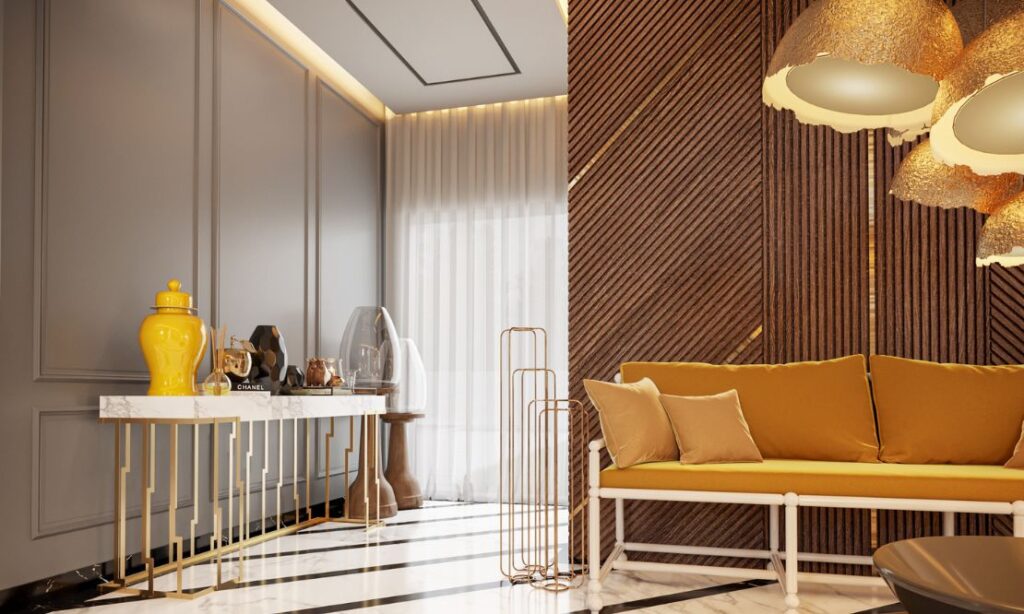
This cheerful shade from the warm family is ideal to brighten up any room and bring a vivacious mood. It has the power to enliven anyone in its presence. With yellow too, it’s important to choose the right shade, too bright or too dull can prove counter-productive.
3. Blue
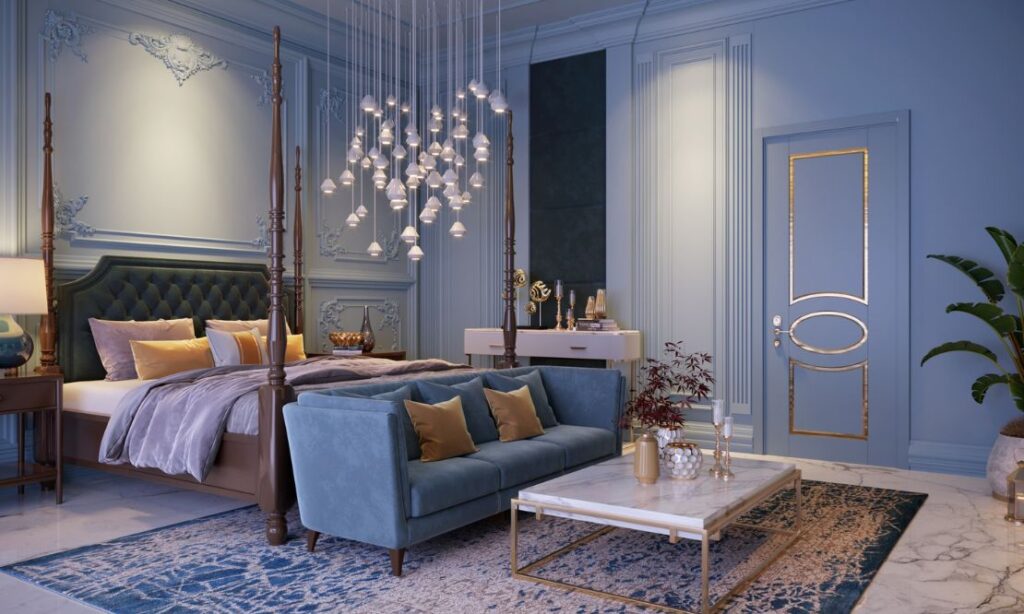
Though it’s from the “cool” family, it’s considered very ideal for most interiors as it evokes peaceful and serene environments. It’s a colour that puts everyone at ease with its calming effect.
Secondary colours like green, purple and orange are achieved by blending two primary colours.
4. Green
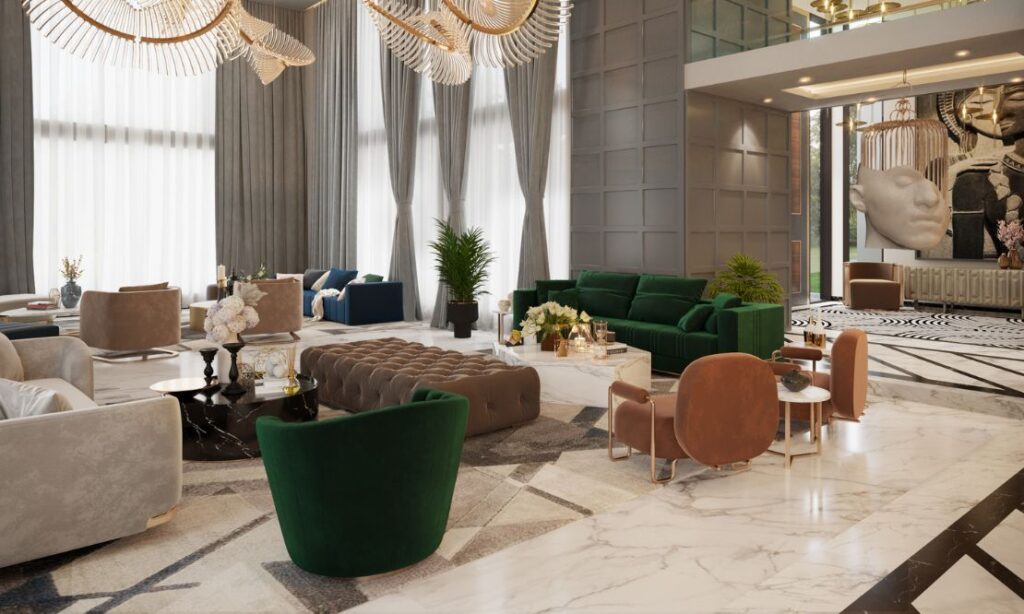
Green is formed by mixing blue and yellow, and represents nature with its freshness and vitality.
5. Purple
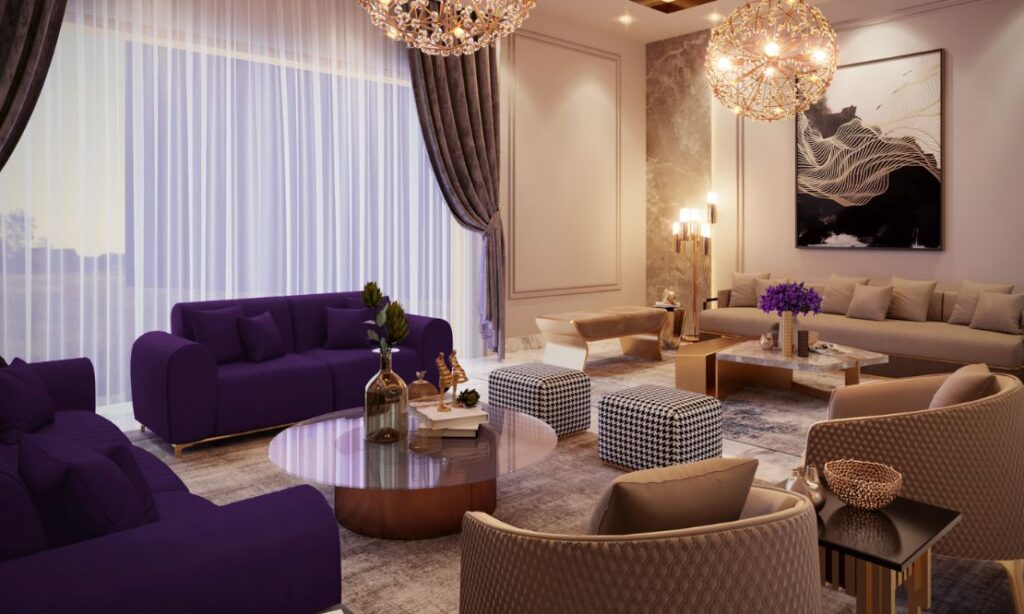
Purple is a combination of red and blue, indicates passion, regality and drama.
6. Orange
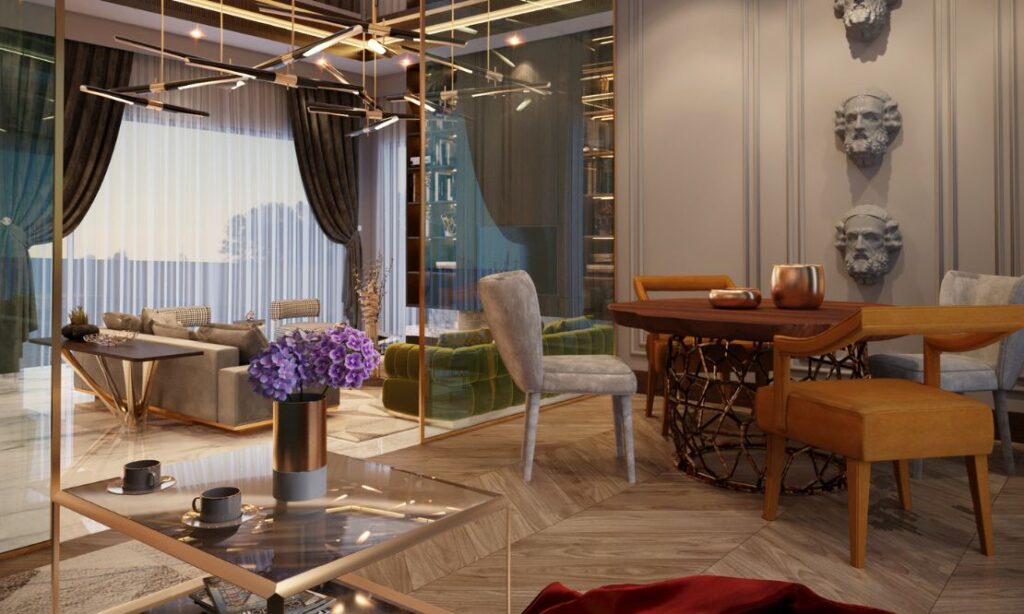
Orange is just like its two base colours, red and yellow, is full of cheer, energy and creativity.
Apart from these colours, it’s also important to understand the role of black and white, considered neutral or non-colours in interiors.
White is a popular base colour, indicative of purity and freshness. It helps evoke a clean and minimalistic environment. It also works well in combination with other colours, and sets off most accent hues beautifully.
Black is a moody, glamorous addition to an interior, and when used judiciously, it can have a wonderful impact on the space.
Black and white also have the power to alter the appearance of other colours. By adding a bit of white to a colour, you get a “tint” of the same colour.
Similarly, adding black to a colour allows you to achieve a “shade” of the same colour. To get a “tone”, you mix gray to a hue. This way you can alter or reduce intensity of a colour to suit your preference.
Must Read – How to Mix and Match Patterns in Your Interiors
Which colour is best for interior design?
So, how does one decide what colours are right for interior design? That will largely depend on what is the personality of the people using the space, and what purpose the space is used for. Warm and inviting colours for living and dining areas, soothing and relaxing ones for bedrooms, bright shades for kitchens and bathrooms can be a general choice.
No colour is good or bad, as long as it serves the purpose of the space, and exudes the required mood.
According to colour psychology, warm and bright colours like red, yellow, orange, etc., are considered happy hues. Brighter and lighter shades like pastels – pink, peach, light pink, lilac, and such hues are considered great for creating soothing and uplifting vibe on your mind. The cheerful yellow is considered the most joyous colour, but it may not be everyone’s favourite. So a lot of thinking goes into deciding what’s good for a space.
However,each of us has a favourite colour that makes us happy no matter what. Whether it makes sense in an interior set-up or not has to be weighed upon before selecting. Individual choices can be met while selecting a colour scheme for their bedrooms. Sometimes, you can use your favourite colour as accent to bring a room to life. Custom furniture also helps you add your personal choice to your interior.
Colour Wheel
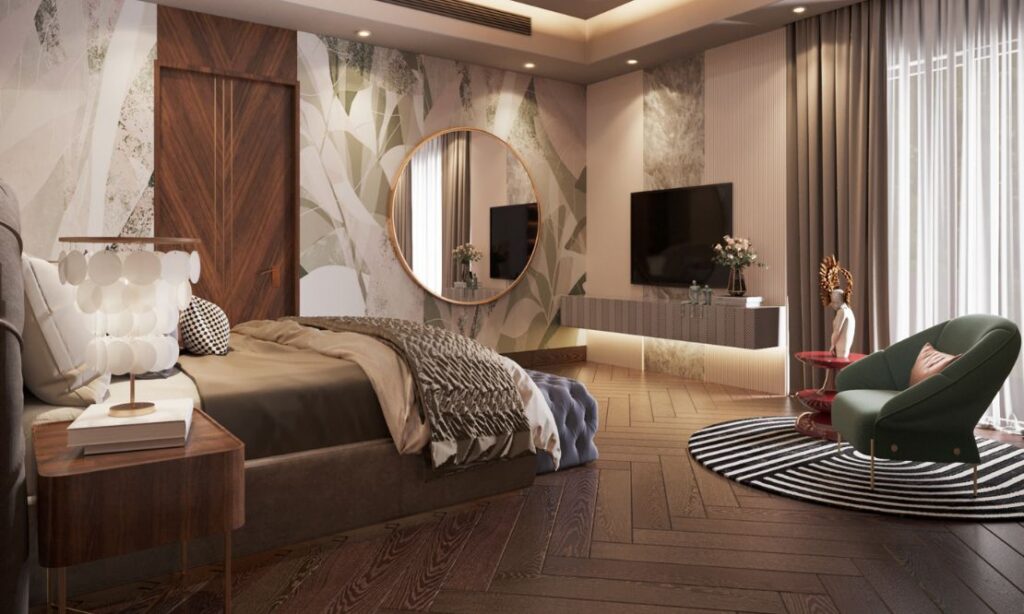
Apart from understanding the individual quality of colours, it is essential to pair them effectively with respect to other hues. Sometimes by contrasting, other times by finding the most complementing hue.
You can use the colour wheel that represents the three primary and secondary colours as well as the tertiary colours. It will give an indication of what colours, shades, tints and tones can be selected from a particular colour. It also helps you gauge what other colours complement it well, or accent it to enhance its beauty.
Of course, it is not enough to just choose the colour. You should also decide through what medium you want to bring it in – paint, wallpaper, textiles, luxury furniture, etc.
Colours and Space
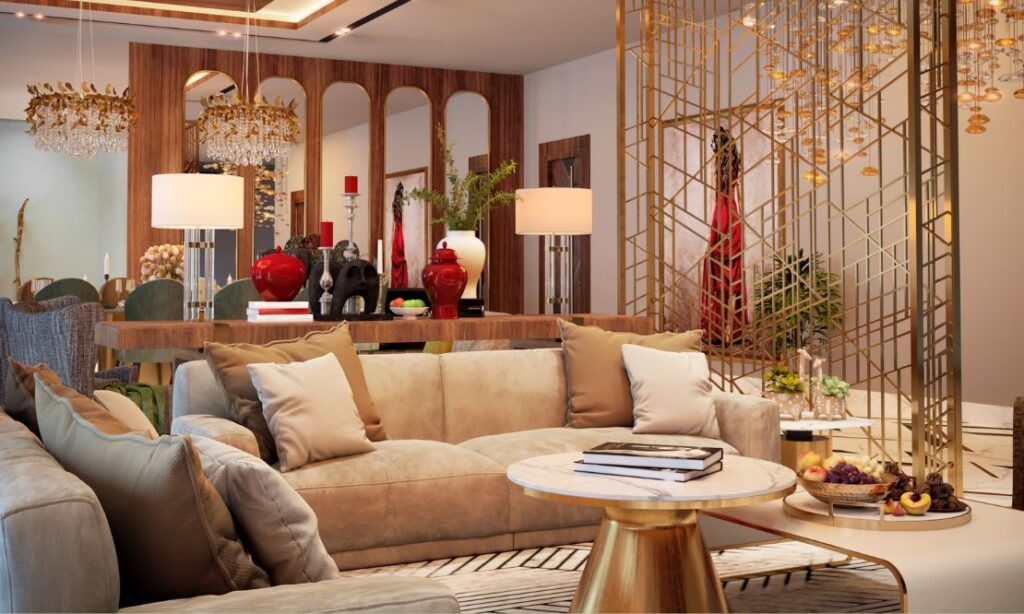
It is also true that colour and spatial perception in interior design are interconnected. Lighter shades in a room give rise to a spatially expansive feeling, while a room covered in dark shades can feel compact. Natural light flooding into a room easily enhances a sense of space, and employing certain reflective shades further makes the room feel larger.
Colours and Wellbeing

Since the effect of colours on the mind is well established, of late, the use of colours in interior design for wellbeing is an evolving aspect. Pastels are considered to have soothing and healing effect on the eyes and the mind. And people feel psychologically comfortable when surrounded by their favourite hues.
Keeping in mind the deep impact of colours on our minds and moods, it’s imperative to select a well-balanced colour scheme for interiors for the best result.


